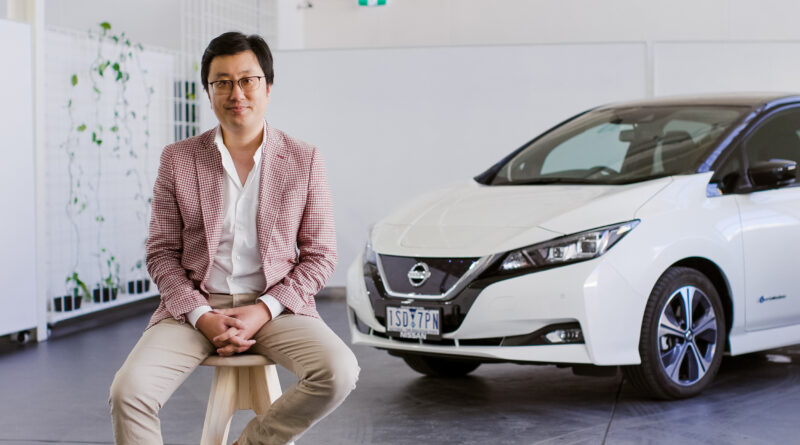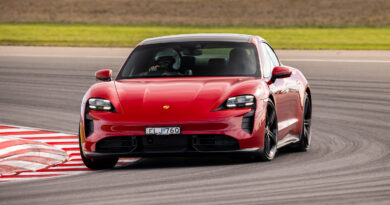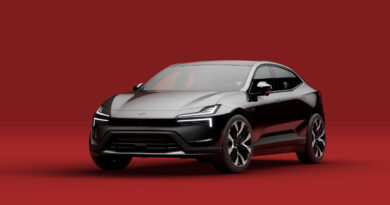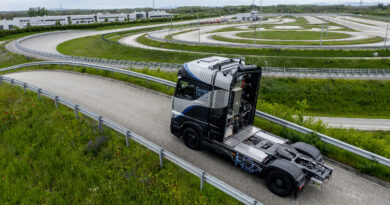V2G tech to change the way we live in Australia from 2022
A future in which your car will act as a giant battery to power your house and you’ll never have to pay for electricity again will finally arrive in Australia in the first quarter of 2022.
Called vehicle-to-grid (V2G) or bi-directional charging, the technology allows an EV to feed electricity to the grid or power a house.
And anyone who’s paid big bucks for a Tesla Powerwall, or similar home battery, will soon find themselves staring at a big, beautiful designed and virtually redundant paperweight as their neighbours install EVs with bi-directional charging and laugh in their faces.
Tim Washington is the founder of Jet Charge, a leading supplier, installer and manager of vehicle charging infrastructure in Australia, and his company already has a waiting list of people wanting to pay $10,000 for one of the country’s first bi-directional chargers, which will allow them to enjoy the magical fruits of Vehicle To Grid (V2G) charging.
READ MORE: $10,500 for 22kWh: Nissan Leaf e+ goes up against Tesla Powerwall for home electricity storage
READ MORE: Why regional Australians could lead the EV V2G charge
At present, only the more recent models of the Nissan Leaf and Leaf e+ and Mitsubishi’s PHEV range – the previous Outlander and current Eclipse Cross – offer the technology in their cars, but Washington says that “every EV maker in the world will have V2G capability by 2025”.
Spreading to other EVs relies on the industry standard Type 2 plug being developed for V2G use; currently only the CHAdeMO plug used in the Leaf, Mitsubishis and just-released Lexus UX300e have a CHAdeMO plug in Australia (as well as some older EVs).
The only hold-out, perhaps unsurprisingly, is Tesla, which has not yet committed to rolling out a technology that could reduce the usefulness of its expensive Powerwalls (they start at $12,750 plus installation) largely unnecessary. If you can use your Tesla Model 3 to do everything the Powerwall can, the point of having one is a little hard to find (unless you have a mansion that’s lit up like Las Vegas rather than a house, perhaps).
At that point, he says, it will be extremely common for Australians to drive to work in their EVs, charge up all day using the free (and no doubt solar-sourced) electricity provided by their employer and then come home and run their entire house off the power stored in their car’s battery for the next two or three days.
Bi-directional chargers also allow you to charge up your car during the day, with your solar panels, and then use that electricity at night or on cloudy days.
“Vehicle-To-Grid technology is one of those things that blows people’s minds, and it will just be so common that everyone will have it, and people won’t remember what it was like before,” Washington explains.

“By 2025 you’ll get your new EV and you’ll just automatically add the V2G charger when you buy the car, and it will be installed at your house, so every time you plug your car in – and remember, your car sits still at home 90 per cent of the time – it can power your home. And then everywhere you drive, by then, will have chargers – supermarkets, your work, your gym – so you charge up when you’re out and discharge at home.
“It means lowering the price of electricity for everybody, and it makes your car a significant asset.”
Washington says even people who prefer public transport or ride sharing might buy a second-hand EV as a home battery on wheels, which can double as a vehicle for occasional trips.
Washington, and Jet Charge, have been promising the roll out of V2G in this country for some time, and he admits that “it has taken a hell of a long time to get government approval, unfortunately”, but he says the arduous process is finally reaching its end point and his company will be able to sell and install bi-directional chargers in the first quarter of next year.
“At the moment, it’s only Japanese cars that are really doing it – in Australia the only cars that offer V2G right now are the Nissan Leaf and Mitsubishi’s plug-in hybrids – but that’s because bi-directional charging has been mandated in Japan for some years, because they wanted people to have the ability to run their homes from their cars during natural disasters,” he explains.
“The Korean manufacturers, Hyundai and Kia, already have Vehicle To Load capability (which allows you to plug anything into your car – from a fridge to an an electric BBQ – using a standard plug) so they’re ready to go to V2G as well. And the entire Volkswagen Group (which includes Audi, Skoda and Porsche) has said all its electric vehicles will have V2G by next year.”
While Washington agrees that $10,000 is a lot to pay for a home charger, he expects the price for drop rapidly over the next few years as take-up grows.





Almost sounds too good to be true which usually means …never mind. Great feature, but home batteries and V2G are not mutually exclusive. They can live harmoniously together. I can think of various scenarios in my setup where I either would not like to drain/reduce my EV battery or the EV is not at home during evenings to supply the V2G load. Hello Home battery; step up please. Power failure for days/weeks as we have seen recently. Oops, I cannot use the car now. Thank heavens for the humble old home battery. It keeps the lights on and the solar connected. In conclusion a informative artcle, but do not discount the home battery. They may still get the last laugh.